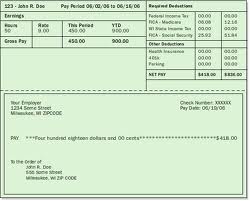Re-branding:
Last week we talked about developing your brand at work.
But what if you have been at your job for a while and you aren’t crazy about the brand you have developed (whether actively or passively)? How can you adjust your attitude - and brand - midstream?
Let’s take a look at two examples of products that have rebranded:

One the left, you have Dominos. A few years ago they realized their customers thought their pizza “tasted like cardboard.” Do you remember their really honest commercials featuring everyone from chefs to executives talking about their commitment to make a pizza you would love?
Then, on the right is Old Spice. The target audience for this blog is women, not men. You're not the main consumers of Old Spice, but when I put this picture up, you know what I'm talking about, don't you?
(Besides, how often will I get to post a picture of an attractive, shirtless man on my blog? I couldn't pass that up! - keep reading & you'll get to see a video of him too)
Both of these products re-branded:
- Dominos started over. They realized their customers were unsatisfied. They said “we made mistakes and we want to make it right.” They created new recipes and invited people to give them another chance. They were aiming to keep the same customers but to satisfy them better.
- Old Spice is a 70-year-old brand and likely had the clientele to support that. According to an article I read in Business Week their goal with their rebranding campaign wasn’t to influence their current clientele, they wanted to capture their competitor’s market share of younger deodorant users.
My own re-branding:
At a previous job I took on a “newbie” attitude, afraid to make any recommendations or assert myself. I was surprised when, a year later, people were still coddling me, giving me extra affirmation, and hesitant to give me challenging assignments.
The brand I’d built was that of a cautious, easily overwhelmed young colleague, rather than the confident, trusted peer I wanted to be (and believed I could be).
I think that it’s necessary and appropriate sometimes to take the “Dominos route” and re-brand to the same audience, especially when you are staying in the same job. In this example though, I took the Old Spice route – I targeted a new group of people. I continued to work with my team, but I also looked for opportunities outside my normal assignments. I demonstrated my competency to new colleagues, all the while continuing to work hard on my regular tasks.
I grew my experience and “raised my stock” within the organization. New colleagues started to trust my expertise. My re-branding spread, and even my old team realized I had more potential than they first thought.
Some tips for re-branding:
- Know what you want your new brand to be. Both Dominos and Old Spice were very explicit about their brand and their target audience. If you haven’t done the homework from last week’s post – think about (and write down) the 3-to-5 words you want to describe your brand at work.
- Be persistent. Neither Old Spice nor Dominos won people over in one interaction. Dominos knew they’d have to change people’s minds, to get them to re-consider. Old Spice, for example, created a campaign that included 186 online videos where Isaiah Mustafa interacted with the public. For you, this means that even though someone may expect you to act like your “old self” and treat you accordingly, you have to continue to “be your new brand."
- Give stuff away. Old Spice gave away free samples. Dominos gave everyone a chance to try their new pizza recipes for free. You can do the same thing: volunteer for an additional project even if it involves staying late. It’s not unreasonable for people to need to try a product to become convinced of its value.
You can do it.
You can rebrand. Everything I read about Dominos and Old Spice tells me it’s hard work, but it can be done.
And… just because I can: (video of Isaiah Mustafa)
[embed]http://www.youtube.com/watch?feature=endscreen&v=3R2cnxz27LI[/embed]





